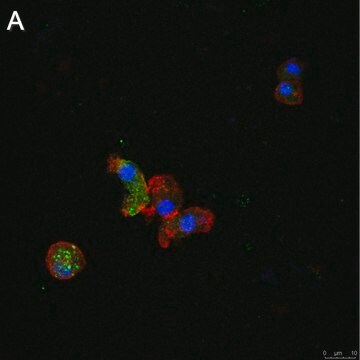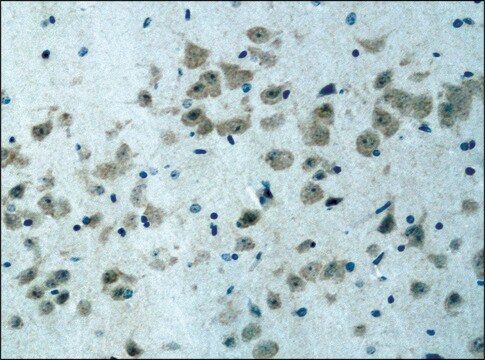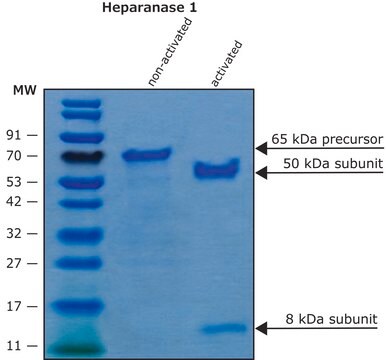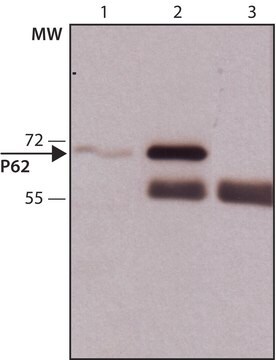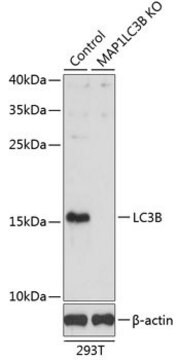ABC974
Anti-ATG8 Antibody
from rabbit, purified by affinity chromatography
Sinonimo/i:
Atg8, Atg8a, Atg8b, Autophagy-specific gene 8a, Autophagy-specific gene 8b
About This Item
Prodotti consigliati
Origine biologica
rabbit
Forma dell’anticorpo
affinity isolated antibody
Tipo di anticorpo
primary antibodies
Clone
polyclonal
Purificato mediante
affinity chromatography
Reattività contro le specie
Drosophila
Reattività contro le specie (prevista in base all’omologia)
Caenorhabditis elegans (based on 100% sequence homology)
tecniche
western blot: suitable
Condizioni di spedizione
wet ice
modifica post-traduzionali bersaglio
unmodified
Informazioni sul gene
fruit fly ... Atg8A(32001)
Descrizione generale
Specificità
Immunogeno
Applicazioni
Apoptosis & Cancer
Apoptosis - Additional
Western Blotting Analysis: A representative lot detected sdRNA-targeted downregulation of Atg8a and Atg8b in Drosophila S2 cells (Shelly, S., et al. (2009). Immunity. 30(4):588-598).
Western Blotting Analysis: A representative lot detected the 16 kDa Atg8-I band (unlipidated) as well as the serum starvation- and vesicular stomatitis virus (VSV) infection-induced 14 kDa Atg8-II band (lipidated) in Drosophila S2 cells (Shelly, S., et al. (2009). Immunity. 30(4):588-598).
Qualità
Western Blotting Analysis: 0.5 µg/mL of this antibody detected ATG8 in 10 µg of DL1 cell lysate.
Descrizione del bersaglio
Stato fisico
Stoccaggio e stabilità
Altre note
Esclusione di responsabilità
Non trovi il prodotto giusto?
Prova il nostro Motore di ricerca dei prodotti.
Raccomandato
Codice della classe di stoccaggio
12 - Non Combustible Liquids
Classe di pericolosità dell'acqua (WGK)
WGK 2
Punto d’infiammabilità (°F)
Not applicable
Punto d’infiammabilità (°C)
Not applicable
Certificati d'analisi (COA)
Cerca il Certificati d'analisi (COA) digitando il numero di lotto/batch corrispondente. I numeri di lotto o di batch sono stampati sull'etichetta dei prodotti dopo la parola ‘Lotto’ o ‘Batch’.
Possiedi già questo prodotto?
I documenti relativi ai prodotti acquistati recentemente sono disponibili nell’Archivio dei documenti.
Il team dei nostri ricercatori vanta grande esperienza in tutte le aree della ricerca quali Life Science, scienza dei materiali, sintesi chimica, cromatografia, discipline analitiche, ecc..
Contatta l'Assistenza Tecnica.